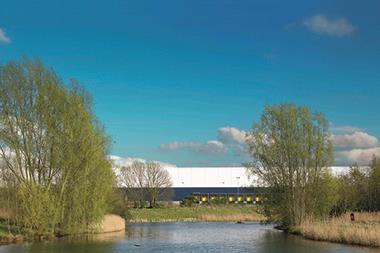One thing is certain. The planning process is a gamble with a binary outcome - either developers achieve planning permission or they don’t.

In that regard, it differs from investing in property where at least if a tenant falls into administration or decides to relocate, there is still the building to show for it. The returns for investing in taking land through the planning process need to therefore show attractive returns to reflect this increased risk.
To minimise the possibility of sites being refused planning application, developers need to identify broad locations within the right catchment areas for both labour and markets, with excellent strategic road network connectivity and where of course there will be demand from occupiers for new buildings.
Over the past two years, we have increased our land bank from 1,500 acres to more than 2,650 acres, which, if all consented, could accommodate more than 34m sq ft of new B8 use space. We undertake a rigorous planning review using our commercial expertise to sift through opportunities - for every 10 sites considered, sometimes only one may be suitable.
Promotion through the planning process can easily take five years, and longer if there are issues to overcome
Once a site has been shortlisted, timing is everything, particularly if developers are seeking to secure a strategic allocation for employment use.
The local plan process typically takes between two-and-a-half and three years from ‘options’ stage through to adoption. However, the window for influencing local plan preparation and its content is small and once the process has started it can be difficult to get local planning authorities (LPAs) to include additional employment sites. In short, the earlier in the process sites can be identified, the better.

That said, be warned: the focus of LPAs is often on housing at the expense of employment as the pressure from government to deliver housing sites is generally greater. There is also the challenge of educating LPAs on modern logistics requirements, and the economic benefits and job creation they bring.
Most national and regional development centres operate on a three-shift, 24/7, 365-days-a-year basis, creating significant employment opportunities for the area.
Supply & demand out of kilter
Assuming an employment allocation is achieved, the next step is the submission of an outline planning application. This can easily take 12 to 18 months, despite the principle of employment development having been established, due to the need to resolve technical issues. Concerns relating to highways, flooding and aesthetics all need to be dealt with.
If outline permission is granted, reserved matters applications need to be progressed for specific occupiers/speculative developments and infrastructure applications need to be made for larger sites. It can take a further six to 12 months to secure all the necessary planning permissions.

We have secured planning consent or had sites allocated for more than 6m sq ft in the past two years. Overall, promotion through the planning process can easily take five years - and considerably longer should there be significant issues to overcome - before you can get on site.
It’s no secret that supply and demand is out of kilter. More land needs to come through the planning process in the right locations to meet this identified demand.
As a rule of thumb, planning costs can easily equate to £1m for every 1m sq ft of floorspace. It is therefore key to undertake early upfront reviews of opportunities to ensure that investment is focused on the right sites.






























No comments yet